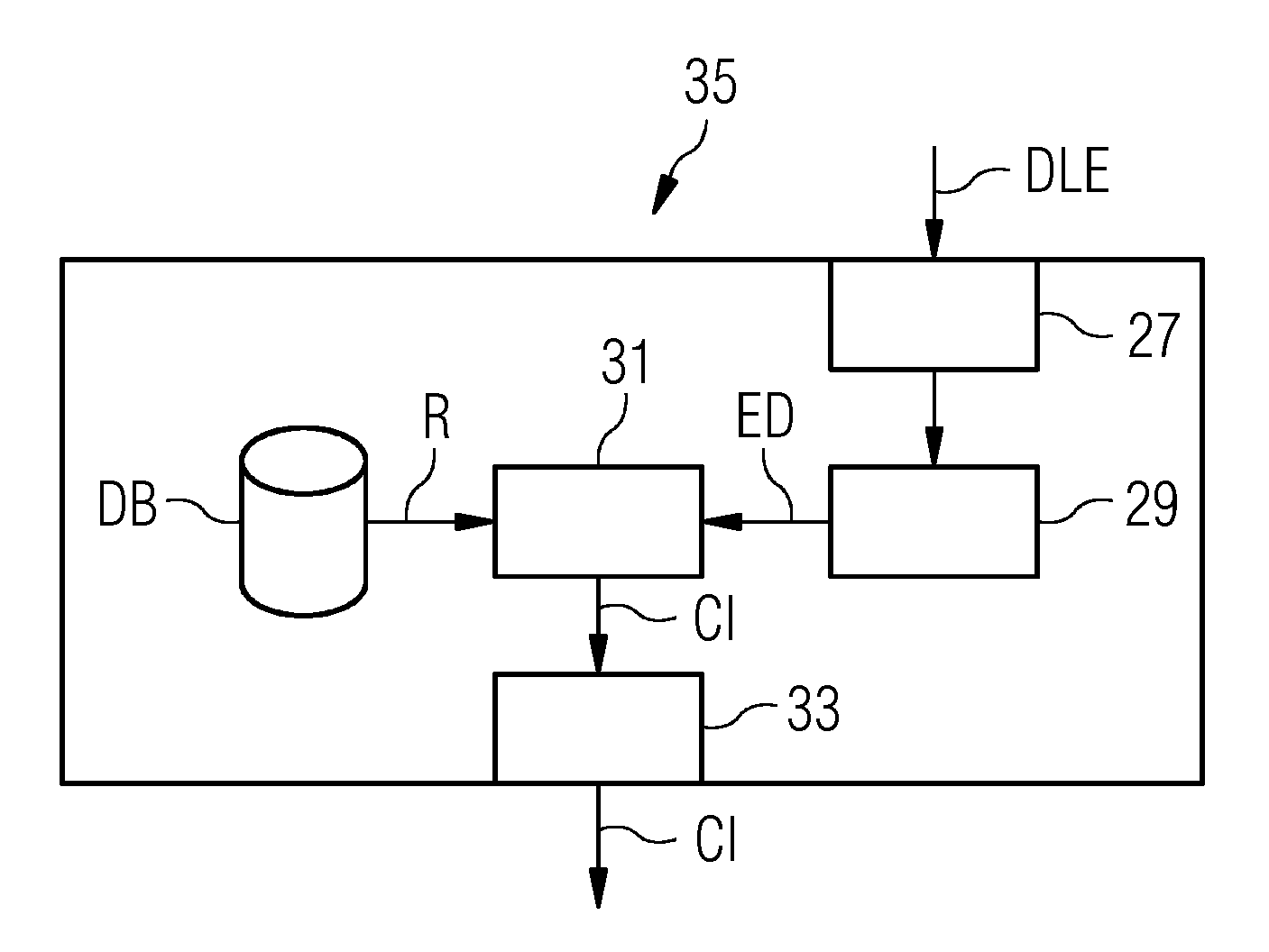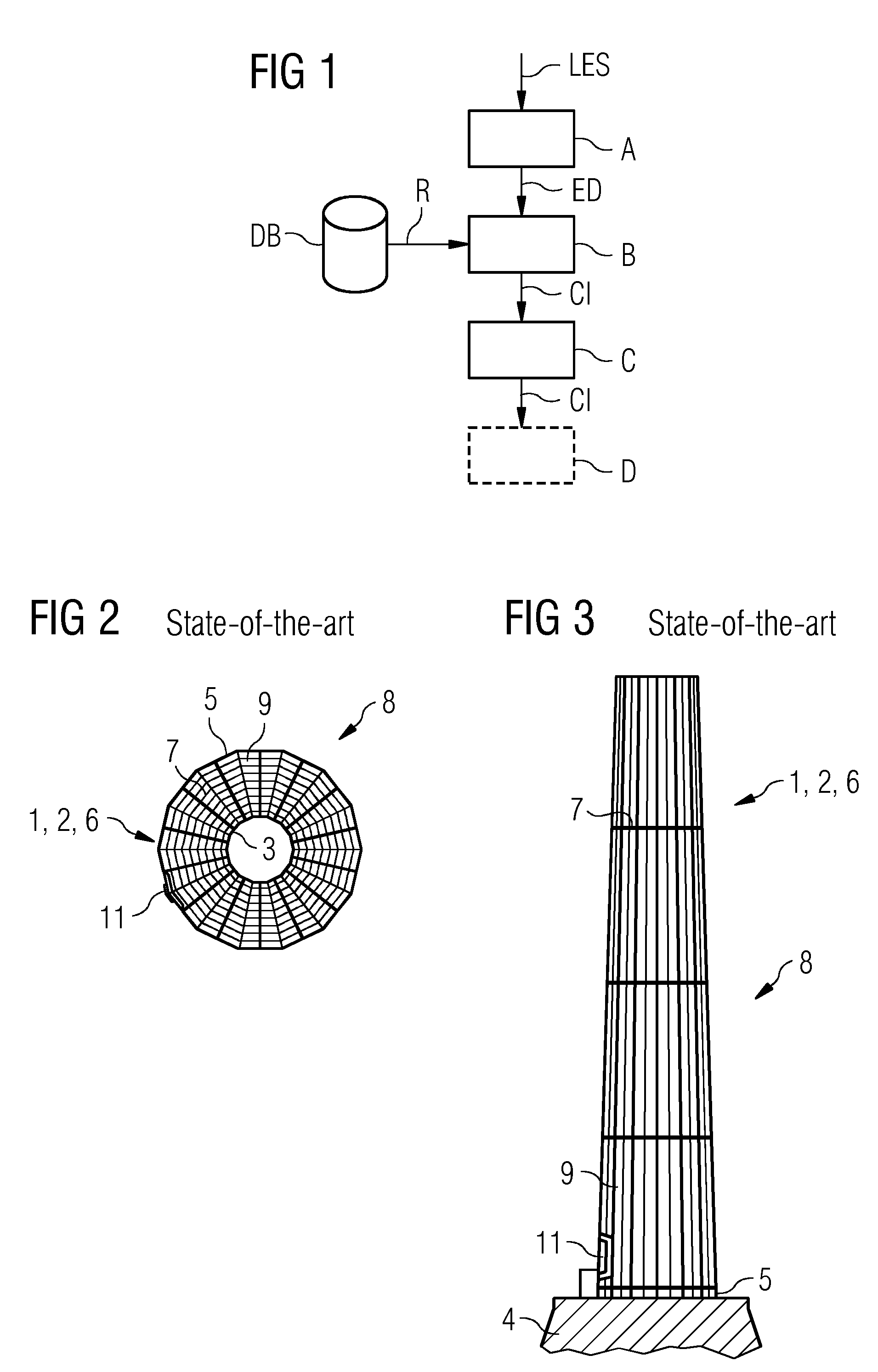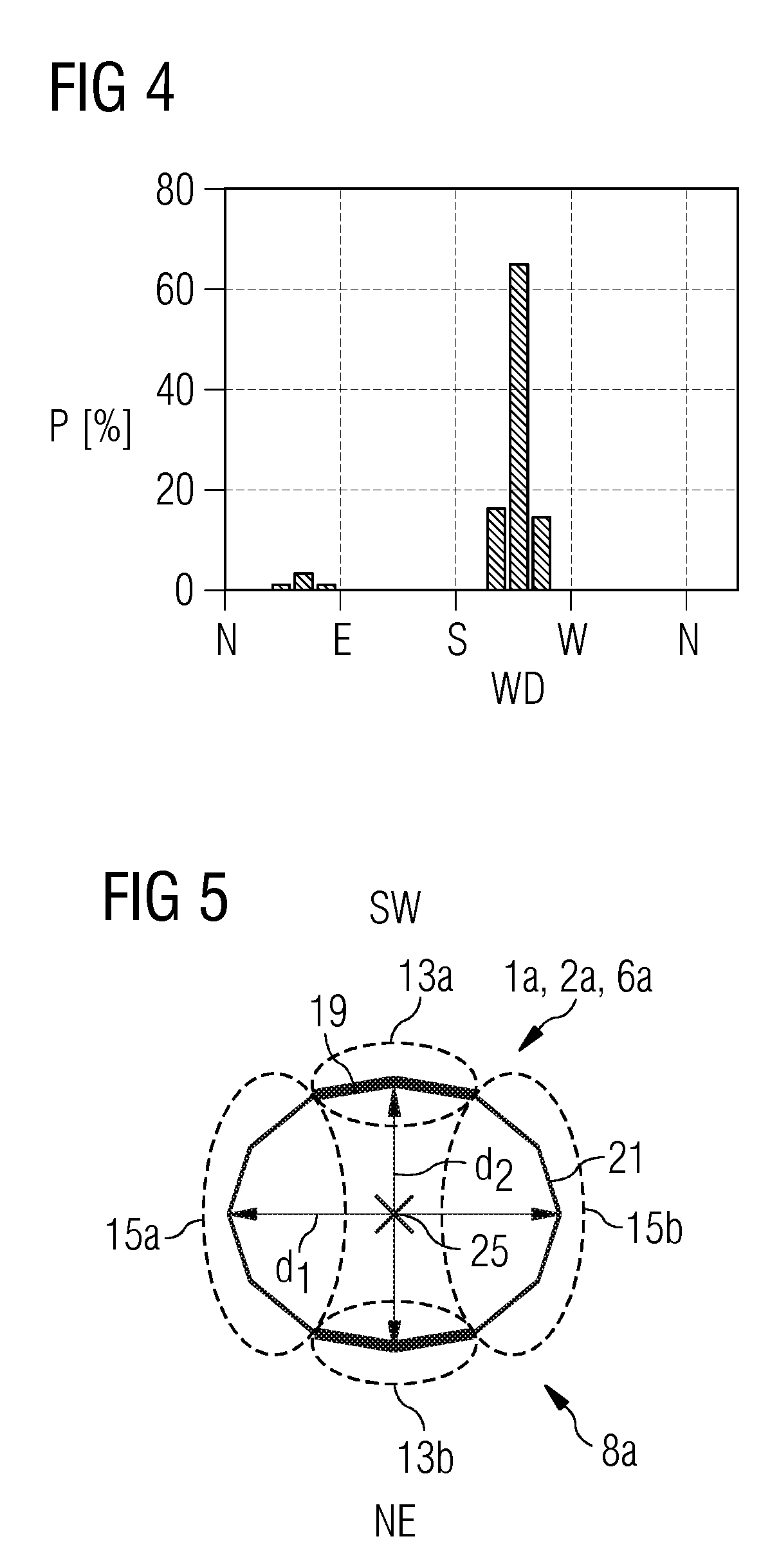Optimisation of a wind turbine
a wind turbine and turbine technology, applied in the direction of machines/engines, mechanical equipment, instruments, etc., can solve the problems of high construction cost, high construction cost, time, material and money, and achieve the effect of easy planning and production, huge savings, and easy detection
- Summary
- Abstract
- Description
- Claims
- Application Information
AI Technical Summary
Benefits of technology
Problems solved by technology
Method used
Image
Examples
Embodiment Construction
[0064]FIG. 1 shows in a schematic block diagram the steps of a method according to one embodiment. In a first step A a local environment situation LES of a construction location, where a wind turbine is planned to be built is analysed. From that analysis there result local load-relevant environmental data ED representing the local environment situation LES. In particular, these local load-relevant environment data ED may comprise parameter values which represent wind conditions and / or other weather conditions. Furthermore, they may, if the wind turbine to be built in an offshore location, represent the influence of waves, in particular wave directions and typical maximum heights of waves in the construction location. In contrast, if the wind turbines is to be built in an onshore location, they may also represent surface conditions of the site on which the wind turbine is to be built. For instance, information whether the surface is evenly horizontal or essentially angular to the hor...
PUM
 Login to View More
Login to View More Abstract
Description
Claims
Application Information
 Login to View More
Login to View More - R&D
- Intellectual Property
- Life Sciences
- Materials
- Tech Scout
- Unparalleled Data Quality
- Higher Quality Content
- 60% Fewer Hallucinations
Browse by: Latest US Patents, China's latest patents, Technical Efficacy Thesaurus, Application Domain, Technology Topic, Popular Technical Reports.
© 2025 PatSnap. All rights reserved.Legal|Privacy policy|Modern Slavery Act Transparency Statement|Sitemap|About US| Contact US: help@patsnap.com



